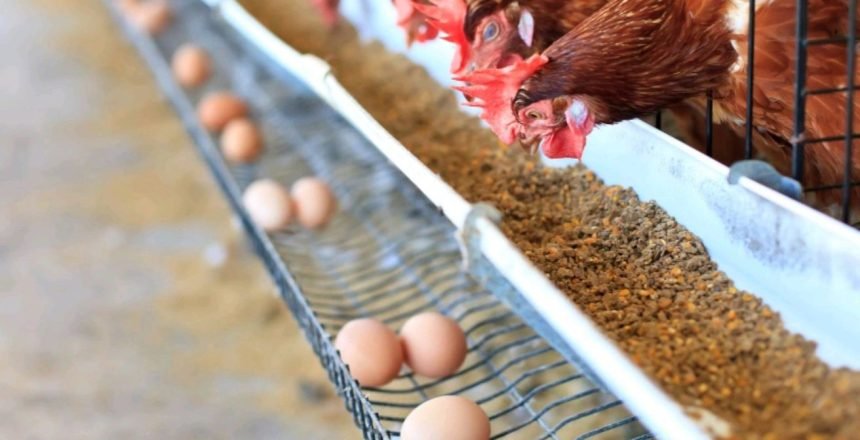As it’s known to us, the cost of poultry feed takes up to 65-75% of the total cost of poultry production business. Therefore, it is really important to have the right formula for chickens. Sometimes, one little mistake on poultry formula will increase production cost or cause great loss for poultry producers or poultry farming business.
Chicken feed formulation is to meet the nutritional requirements of the chickens by giving the feed through an optimal combination of different chicken feed ingredients. At the same time, as human society is an economic society, it is not enough to ensure that chickens can grow properly, but they also need to achieve many other requirements, such as growing faster, spending less and earning more.
In addition to the animal’s own growth and development, reproduction and other needs for energy and protein, there are also human requirements for them, such as the requirement for tender chicken meat, so that humans must artificially change the animal’s nutritional needs to achieve certain purposes.
A common formula for a balanced chicken feed might include:
1.Grains: Corn, wheat, barley, or oats serve as a primary energy source.
2.Protein: Soybean meal, fish meal, or other protein sources provide essential amino acids necessary for growth and development.
3.Calcium: Crushed limestone or oyster shell provides calcium for eggshell formation and bone health.
4.Vitamins and minerals: Commercial poultry vitamin and mineral supplements or premixes ensure chickens receive essential nutrients like vitamin A, vitamin D, vitamin E, and various minerals such as phosphorus and potassium.
5.Supplements: Depending on the specific needs of the chickens, supplements such as probiotics, prebiotics, or herbal additives might be included to support gut health and overall well-being.
The best chicken feed formula depends on various factors including the age of the chickens, their breed, their intended purpose (e.g., egg-laying, meat production), and any specific dietary requirements or restrictions. However, a basic chicken feed formula typically includes a mix of grains, protein sources, vitamins, and minerals.
For examples, the differences between the feed for adult chickens and that for chicks, as they have different growth stages and nutritional requirements.
Protein Content:Chicks require a higher protein content in their feed to support rapid growth, development of body tissues, and the formation of feathers and organs. Therefore, chick feed typically contains a higher proportion of protein. In contrast, adult chickens have completed most of their growth, so their protein requirements are lower.
Energy Requirements:Chicks need more energy to sustain their rapid growth, development, and to maintain body temperature. Therefore, chick feed may provide a formula with a higher energy density. The energy requirements of adult chickens are relatively lower.
Vitamins and Minerals:Due to their rapid growth, chicks have higher requirements for vitamins and minerals. Therefore, chick feed usually contains more vitamins and minerals to meet their growth and development needs. Conversely, the vitamin and mineral requirements of adult chickens decrease as they age.
Overall, chick feed and adult chicken feed may differ in formulation and nutritional composition to meet the nutritional needs of chickens at different stages of growth.
Formula 1: Bran 3.2%, maize 62%, soybean meal 31%, calcium hydrogen phosphate 1.3%, rock flour 1.2%, additives 1%, salt 0.3%.
Formula 2: Soya bean meal 24%, maize 61.7%, wheat bran 4.5%, vegetable meal 4%, rock meal 1.2%, fish meal 2%, salt 0.3%, calcium hydrogen phosphate 1.3%, additives 1%.
Formula 3: a) Corn 62.7%, bran 4%, soybean meal 25%, fish meal 1.5%, vegetable meal 3%, stone meal 1.2%, calcium hydrogen phosphate 1.3%, salt 0.3%, additives 1%;b) Note that the additives should contain amino acids, vitamins, growth promoters and trace elements.
Formula 1: Soya bean meal 38%, stone meal 1%, maize 55.3%, cooking oil 3%, salt 0.3%, additives 1%, calcium hydrogen phosphate 1.4%.
Formula 2: Corn 54.2%, soybean meal 34%, salt 0.3%, rock flour 1%, cooking oil 3%, vegetable meal 5%, additives 1%, calcium hydrogen phosphate 1.5%.
Formula 3: Vegetable meal 4%, soybean meal 32%, rock meal 1%, corn 55.2%, calcium hydrogen phosphate 1.5%, fish meal 2%, cooking oil 3%, additives 1%, salt 0.3%
Due to the different formulations, our production processes also have slight variations, which require specific configurations for the production line equipment.
GAMMA TECH is one of the leading poultry feed mill equipment manufacturer in China, has rich and practical experiences in helping customers to setting up a poultry feed mill business. If you are interested in knowing the feed plant layout and design, working process, total cost of this poultry chicken feed mill plant, just contact us to get customized answers!







